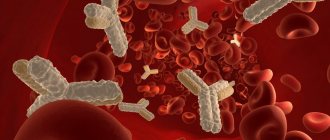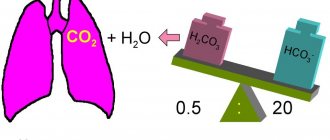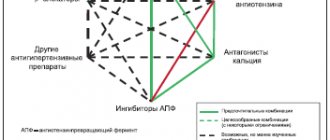Anisocytosis is a pathological change in the size of red blood cells and platelets that occurs against the background of various human diseases. Anisocytosis of mixed type is more often diagnosed in medical practice. Blood is the internal medium of the body and performs an important function, providing all organs and systems with oxygen and nutrients. Changes in the shape and size of the cells of this substance often indicate the development of serious diseases, but additional medical research is required to clarify the diagnosis.
Disease concept
What does anisocytosis mean and what is it? Normal red blood cells that make up the blood are called normocytes. In a healthy person, the size of these cells corresponds to 7–7.5 microns. The diameter of microcytes is 6.9 microns. The size of megalocytes is 12 microns, macrocytes – 8 microns. As a percentage, the number of normocytes occupies about 70% of the blood volume, respectively, the number of macrocytes and microcytes should be up to 15%. Violation of this ratio indicates the development of anisocytosis.
The symptoms of the disease are similar to anemia and heart failure. The patient feels weakness, decreased performance, and gets tired quickly. Palpitations, shortness of breath and other symptoms often occur.
Important! Anisocytosis is often asymptomatic and is detected during a blood test during routine examinations.
How the research works
In modern medicine, equipment plays an important role in treatment. the same can be said about a blood test. On an empty stomach, blood is drawn either from a vein in the elbow or from a finger (this method is especially often practiced in the case of children), and then all the work is transferred to a modern analyzer, which conducts research quickly and with high quality, giving an accurate result .
It counts the number of red blood cells of different sizes per microliter of blood, calculates the average cell size and determines the degree of deviation from the norm of this indicator. The largest and smallest cells are also measured and the difference between this spread and the possible norm is analyzed. This indicator is recorded in femtoliters.
Of course, the equipment may not always be accurate; maximum accuracy of results can only be obtained by manual counting, but this is a very long and labor-intensive process, which is practically not used in modern medicine.
If deviations in this indicator occur, the blood test is performed again to obtain a reliable result, because the diagnosis cannot be made as a result of a single blood sample.
Causes of abnormal shape and size of blood cells
Anisocytosis of platelets and leukocytes is not an independent disease. The diameter, color and shape of blood cells change due to various disorders in humans.
Causes of anisocytosis:
- errors in nutrition. A slight disturbance in the level of blood cells may indicate poor nutrition or insufficient intake of certain components into the body. Of course, this factor cannot provoke a strong deviation from the norm, but it cannot be ignored;
- lack of iron, vitamins A and B12. These elements are necessary for the normal formation of red blood cells. Vitamin A ensures the maintenance of normal cell diameter. If iron and vitamin B12 deficiency occurs, the percentage of blood elements is disrupted, which can cause anisocytosis;
- blood transfusion. Often, after a blood transfusion from a donor who has an abnormality in the form of anisocytosis, the person who received the blood will also develop this condition. This is explained by the inability of the immune system to quickly normalize these indicators. If a person is healthy, after some time his anisocytosis will disappear on its own;
- oncology. Bone marrow neoplasms always entail a disturbance in the composition of the blood;
- diseases of the thyroid gland, liver.
A common cause of anisocytosis is a lack of vitamins and iron deficiency in the blood.
With a long course of infectious diseases and severe intoxication of the body, transient compensatory anisocytosis is observed. This condition is characterized by a change in the cell structure of lymphocytes and leukocytes.
Macrocytosis is more often found in anemia, leukemia, liver and pancreas diseases. Often in combination with this, the patient is diagnosed with hypochromia - a decrease in hemoglobin production.
Reasons for increasing and decreasing RDW
Anisocytosis is an early sign of anemia, the severity of which is determined by its degree. The main reasons for increased RDW in both adults and children are as follows:
- Iron-deficiency anemia.
- Hemolytic anemia.
- Megaloblastic anemia (deficiency of vitamin B12 and folic acid).
- Chronic liver diseases.
- Metastases to the liver.
- Blood transfusions.
- Myelodysplastic syndrome.
- Alcohol addiction.
In addition, RDW can be increased in Alzheimer's disease, hemoglobinopathy, lead poisoning, microspherocytosis, bone marrow metaplasia, and cardiovascular diseases.
During treatment of iron deficiency anemia, the anisodide index increases. This is explained by the appearance in the blood of a large number of young red blood cells, which differ in diameter from mature ones. With effective treatment, RWD returns to normal, but after other indices.
A change in the diameter of red blood cells is considered a diagnostic marker that informs about the risk of developing coronary heart disease.
RDW is almost never low. If you receive such a result, you most likely should retake the analysis. If the indicator is slightly reduced and there are no other changes in blood tests, this result should be considered normal. A reduced RDW has no diagnostic value.
In some pathologies, RDW does not change; the indicator remains normal. This includes the following conditions:
- anemia accompanying chronic diseases;
- β-thalassemia;
- spherocytosis;
- acute aplastic and hemorrhagic anemia;
- sickle cell anemia.
Symptoms of pathology
Anisocytosis is not an independent disease; the condition is characterized by a disturbance in the composition of the blood under the influence of one or another pathology (for example, anemia, oncology, liver disease). Symptoms of this condition can be very diverse, depending on in which organ the pathological changes occur.
Common signs of anisocytosis include asthenia. The concept implies the development of weakness, fatigue, and irritability in a person. When performing light physical work, the patient notices shortness of breath and loss of strength. Psychological disorders occur. Sleep is often disturbed, mood changes occur, a person becomes aggressive or, conversely, apathy and reluctance to communicate with other people develop.
Many patients are diagnosed with heart rhythm disturbances. As a result, paleness or redness of the skin, dizziness, and flickering of spots before the eyes may occur.
In general, anisocytosis is characterized by signs of heart failure, but when examining the heart, no abnormalities in the functioning of the organ are noted, because the symptoms arise due to a violation of the percentage of blood cells, which can cause difficulties in diagnosis.
Symptoms indicating changes in red blood cells
There are various symptoms of anisocytosis. Some of them are mild, but they can gradually become severe.
A person with anisocytosis often experiences the following symptoms.
- Rapid breathing. This is a common symptom. Its occurrence is associated with a deficiency of hemoglobin, which leads to insufficient oxygen transport. Thus, patients often feel short of breath after minimal activity.
- Paleness . Since the necessary oxygen does not reach our skin, nails and eyes as it should, they become paler.
- Lethargy. With abnormal red blood cell sizes, oxygen distribution is inadequate. Consequently, general fatigue and lethargy are also common symptoms.
- Tachycardia. Palpitations occur not only after physical activity, but also in normal everyday life. The heart pumps quickly to compensate for the body's need for oxygen, and therefore the number of heartbeats increases.
Some other symptoms may also be present:
- headache;
- low body temperature;
- cold palms and feet;
- dizziness (feeling of falling).
Photo: https://pixabay.com/photos/sad-woman-upset-female-people-2385795/
Types and degrees of anisocytosis
Anisocytosis is classified depending on what types of blood cells are changed. Pathology has the following classification:
- anisocytosis of mixed type. Here, the material under study contains up to 50% macro- and microcytes;
- microcytosis - the diameter of blood cells is less than 6.7 microns;
- macrocytosis - a condition with a predominance of macrocells, their diameter is more than 7.8 microns;
- megalocytosis – cell size exceeds 12 microns.
Under various conditions, the shape and size of blood cells change
In addition, the blood rdw indicator is distinguished depending on the degree:
- +(I) – the number of altered erythrocytes is not more than 25% – micro anisocytosis is insignificant;
- ++(II) – the number of altered cells from 25% to 50% – moderate, that is, the number of blood cells with irregular shapes is moderately increased;
- +++(III) – the number of red blood cells having irregular size or shape ranges from 50% to 75% – pronounced;
- ++++(IV) – all red blood cells have a changed shape – pronounced anisocytosis.
Taking into account this classification, the doctor can give a conclusion, for example, mixed-type anisocytosis is moderate, which means that the blood contains macro- and microparticles of altered size, and their total number is no more than 50%.
Important! Severe anisocytosis almost always indicates the development of severe pathologies in the body.
Prevention and prognosis
To prevent the problem from developing, it is enough to follow a few simple rules. Preventive recommendations:
- complete renunciation of addictions;
- complete and balanced nutrition;
- frequent exposure to fresh air;
- constant strengthening of the immune system;
- avoiding physical and emotional stress;
- regular comprehensive preventive examination in a medical institution.
Regardless of whether the volume of formed parts of blood is reduced or increased, the prognosis will be dictated by the etiological source. It is necessary to take into account that each basic disease has a number of its own complications.
Anisocytosis in pregnant women and children
Physiological macrocytosis is often observed in a newborn child. This is explained by age characteristics. As a rule, during the first 2–3 weeks of life, blood counts return to normal on their own without additional treatment. In addition, moderate anisocytosis in children can occur due to infectious diseases. The norm increases slightly; after recovery, the blood formula is restored.
Anisocytosis during pregnancy often develops against the background of anemia due to a lack of iron in the body. Blood counts in pregnant women are corrected using proper nutrition and taking iron-containing medications.
Anisocytosis often develops in children against the background of various infectious diseases.
Changes in biochemical parameters
During pregnancy, a decrease in the total concentration of protein in the blood plasma (albumin) is due to partial dilution of the blood due to an increase in its total volume. But it can occur as a result of fluid retention in the body, hemodynamic disturbances, and increased vascular permeability during pregnancy.
Changes in the concentration of blood proteins are detected on the proteinogram. In the first and second trimester of pregnancy, albumin decreases. In the third trimester, an increase in the alpha-1-globulin fraction, alpha-fetoprotein, is detected.
The alpha-2-globulin fraction can increase due to proteins associated with pregnancy (begin to increase from 8-12 weeks of pregnancy and reach a maximum in the third trimester). Betta and gamma globulins also increase. Minor changes in C-reactive protein, observed more often in the early stages of pregnancy, may be the body’s reaction to the processes of increased cell division during the growth and development of the baby.
Changes in circulating blood volume (CBV) and blood supply to the kidneys lead to changes in the excretory function of the kidneys. There is a delay and accumulation of nitrogenous substances, while the amount of urea decreases, especially in late pregnancy. Creatinine levels decrease maximally in the 1st-2nd trimester (its concentration can decrease by almost 1.5 times), which is associated with muscle growth in the mass of the uterus and child. The level of uric acid is often reduced due to increased blood supply to the kidneys. But even minor disturbances in kidney function can lead to an increase in this indicator, and this is regarded as a possible symptom of intoxication.
Fat metabolism changes significantly during pregnancy. Since metabolic processes in the body intensify, cholesterol levels (cholesterol, high-density lipoprotein HDL) increase.
An increase in the level of estrogen hormones during pregnancy leads to the deposition of fat in the mammary glands, waist and buttocks. Therefore, losing weight and going on diets is useless for pregnant women. This is hormonal and will go away only after the child is one year old, almost regardless of whether the mother breastfeeds or not.
During pregnancy, insulin levels increase. The indicator reflecting the level of insulin is C-peptide. In this case, the glucose level may change slightly or not change at all.
However, glucose can be detected in urine during normal pregnancy. This happens because during pregnancy the rate at which urine is filtered through the kidneys increases. Most often, glucose in the urine appears during pregnancy 27-36 weeks.
Features of mineral metabolism in healthy pregnant women compared to non-pregnant women is the retention of sodium, potassium, chlorine, and phosphorus salts in the body. And it is precisely the changes in phosphorus levels in the pregnant woman’s body that are associated with an increase in alkaline phosphatase. This is due to changes during pregnancy in bone tissue and changes in the liver.
As you know, during pregnancy the need for calcium salts, which are necessary for the formation of the baby’s skeleton, increases. Therefore, the mother may experience calcium deficiency, which sometimes manifests itself in muscle cramps.
Increased iron consumption by the body of a pregnant woman can lead to anemia. This condition is characterized by a decrease in iron, ferritin, vitamins: B12, folic acid.
Diagnostics
Anisocytosis and poikilocytosis are the main indicators of the development of any disorders in the body. If the shape of a cell is changed, its size or color is increased, this indicates the development of a pathological condition in the internal organs of the patient. Diagnosis of blood composition disorders is carried out exclusively through laboratory testing. To do this, a person is prescribed a general blood test. Additional research is rarely required.
To correctly pass the test, the patient must adhere to the following recommendations:
- in the morning before taking the test, you should not eat or drink; dinner the night before should be light and not contain spicy, fatty, salty, or smoked foods;
- one day before blood sampling, you cannot exercise, drink alcohol, or go to the pool or sauna;
- Before donating blood, all medications are discontinued;
- It is advisable to carry out repeated analysis at the same time of day. Immediately before the procedure you need to catch your breath and calm down.
If these recommendations are ignored, the analysis will be inaccurate, which will cause difficulty in making a diagnosis.
Symptoms of deviation
Anisocytosis is a condition that in most cases is a sign of anemia. The symptoms are similar. Severe signs of this condition resemble manifestations of heart failure. If you notice the signs described below, consult a doctor and take a general blood test:
- fast fatiguability;
- decreased performance;
- loss of concentration;
- lack of ability to play sports;
- impotence and loss of strength;
- shortness of breath during exertion or for no apparent reason, appearing periodically;
- rapid heartbeat without any exertion;
- increased pumping of the heart muscle;
- pale skin;
- pale color of nail plates;
- pallor of the eyeballs;
- headache;
- noise in ears;
- disturbances of normal appetite and sleep;
- the level of sexual desire decreases;
- impaired skin sensitivity.
If these symptoms appear, you should consult a doctor.
How is the treatment carried out?
Treatment of anisocytosis is carried out depending on the disease that provoked the disturbance in blood composition. Modern technologies used in medical practice make it possible to accurately determine the disease that caused the disorder. With anisocytosis of erythrocytes, we are often talking about iron deficiency anemia. In this case, the patient is prescribed a special diet, including foods with sufficient iron content and medications that restore hemoglobin.
If a large number of cells with an uncharacteristic size and shape are detected in the blood against the background of colds and infectious diseases, detoxification therapy is carried out, efforts are directed towards suppressing cells that cause intoxication of the body and increasing immunity.
Anisocytosis, provoked by anemia, requires the introduction of foods containing iron into the human diet
If oncology is detected, a person is prescribed surgical treatment, radiation and chemotherapy. The earlier the pathology is detected, the greater the chances of coping with it, avoiding metastases and death of the patient.
Analysis on RDW
Blood is examined for anisocytosis during a general analysis. The fence is made from a finger. You need to take it on an empty stomach in the morning. The degree of anisocytosis can be determined manually by laboratory assistants. Today, the RDW index is increasingly calculated using modern hematology analyzers, which provide faster and more accurate results. This parameter is determined automatically using a special formula, taking into account other erythrocyte indices.
The analysis is deciphered by the attending physician, and the values of other indicators are taken into account. Thus, in parallel with the assessment of RDW, the erythrocyte index MCV (average erythrocyte volume) is assessed. This is due to the fact that the anidocytosis index may remain normal, but the presence of micro- and macrocytes is a pathology.
The value of the anisocytosis index is necessary for the doctor to interpret the test result and diagnose anemia, including differential diagnosis. Determining the number of red blood cells in the blood and the level of hemoglobin does not give a complete picture, but only indicates the presence of anemia.
Preventive actions
Anisocytosis is not an independent pathology, but only signals the development of other diseases of the body, so due attention should be paid to the prevention of this condition. To avoid changes in blood composition, you should adhere to the following preventive measures:
- Correctly adjust your diet, saturate your diet with food containing a sufficient amount of iron;
- take blood tests regularly;
- promptly treat infectious diseases;
- to refuse from bad habits;
- pay due attention to sports. Physical activity has a beneficial effect on the body’s metabolic processes, which has a positive effect on blood composition;
- If you notice such signs as weakness, fatigue, apathy, you must inform your doctor about this.
By following a healthy lifestyle, you can prevent serious illnesses. Proper nutrition, hardening and exercise can strengthen the immune system and prevent the development of severe pathologies.
Indications for testing
Often, such an analysis is preventive and is taken on a regular basis (on average once a year) to identify diseases in the early stages, when they are much faster and easier to treat. It is prescribed to pregnant women to monitor their general condition and identify problems such as anemia, and for inpatient monitoring.
A general blood test is required during hospitalization to conduct a basic examination and obtain a more accurate picture of the disease, as well as before surgery to prevent possible complications. If the body is severely weakened, this may indicate that the person will not survive the operation; in such cases, it is necessary to undergo preliminary treatment for recovery.
The analysis is prescribed to identify and diagnose different types of anemia, as well as for possible diseases of the hematopoietic system. A general blood test helps track dynamics during monitoring of ongoing treatment, accurately determining the onset of improvements or deteriorations in the body’s condition, which helps to timely adjust treatment. It can be prescribed by a physician, general practitioner, surgeon, neurologist and hematologist.









